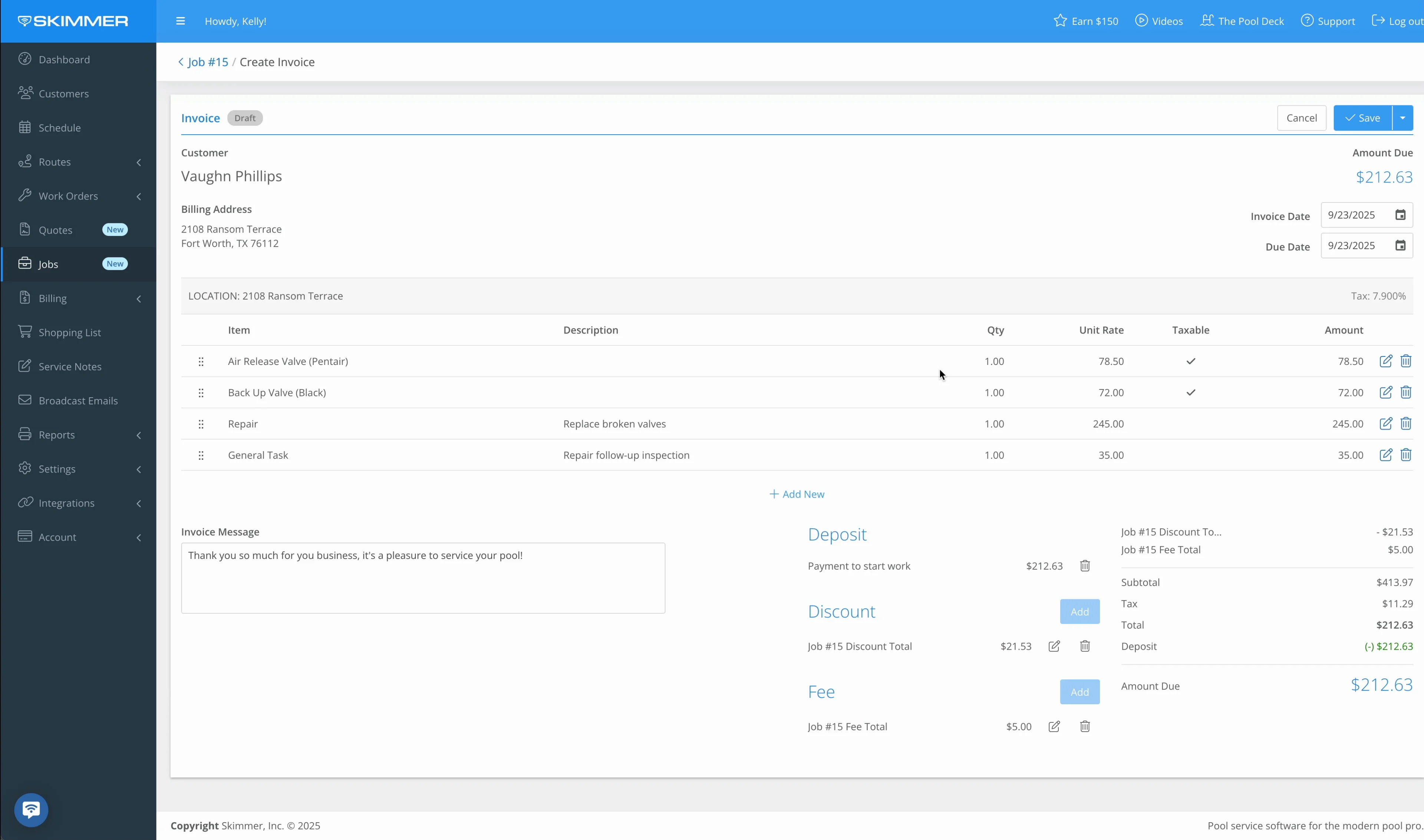Jobs – Manage Invoices
Tiers: Scaling Up, Skimmer for Enterprise

Step-by-step instructions . . .
- 1
-
The Invoices box includes invoices brought over from the original Quote, as well as any new invoices added directly to the Job. You’ll see a hyperlinked invoice number, due date, total, remaining balance, and current status.
It will also show the invoice to collect a deposit, was required. When the deposit is collected, it will automatically be deducted from the next invoice for this job. However, you can use the trash icon on the invoice to remove the collected deposit. This defers applying the deposit and the deduction will show again the next time this job is invoiced.

- 2
-
Now that the deposit is paid, we can add another invoice. If you create one from scratch, you’ll be taken to the standard “create new invoice” screen. If you create an invoice from Job line items, it will auto-populate with line items. You have the option to edit, add new, or delete any line items.
Once the invoice is ready, you can save it, save and send it to the customer, or save and mark it as sent. Skimmer will continue tracking the status of the invoice, and that will reflect in the Invoices box.

-

-

- 3
-
Now the Invoices box has updated.
While a Quote is a single snapshot in time, a Job can happen across a period of time. Tax rates will be dynamic until the Job is closed. So if you create the Quote with a certain tax rate, then halfway through the job you change that tax rate, the Job will inherit that new tax rate. This means the total price for the approved Quote and the final Job could be different, since tax rates were updated. When the Job is closed, Skimmer will snapshot the tax rate at that point and lock it in.
Skimmer does not limit the amount you can bill for a Job. If your total invoices add up to more than the Job Total, which you get from everything in the Line Items box, the Invoice total will exceed the Job total.






